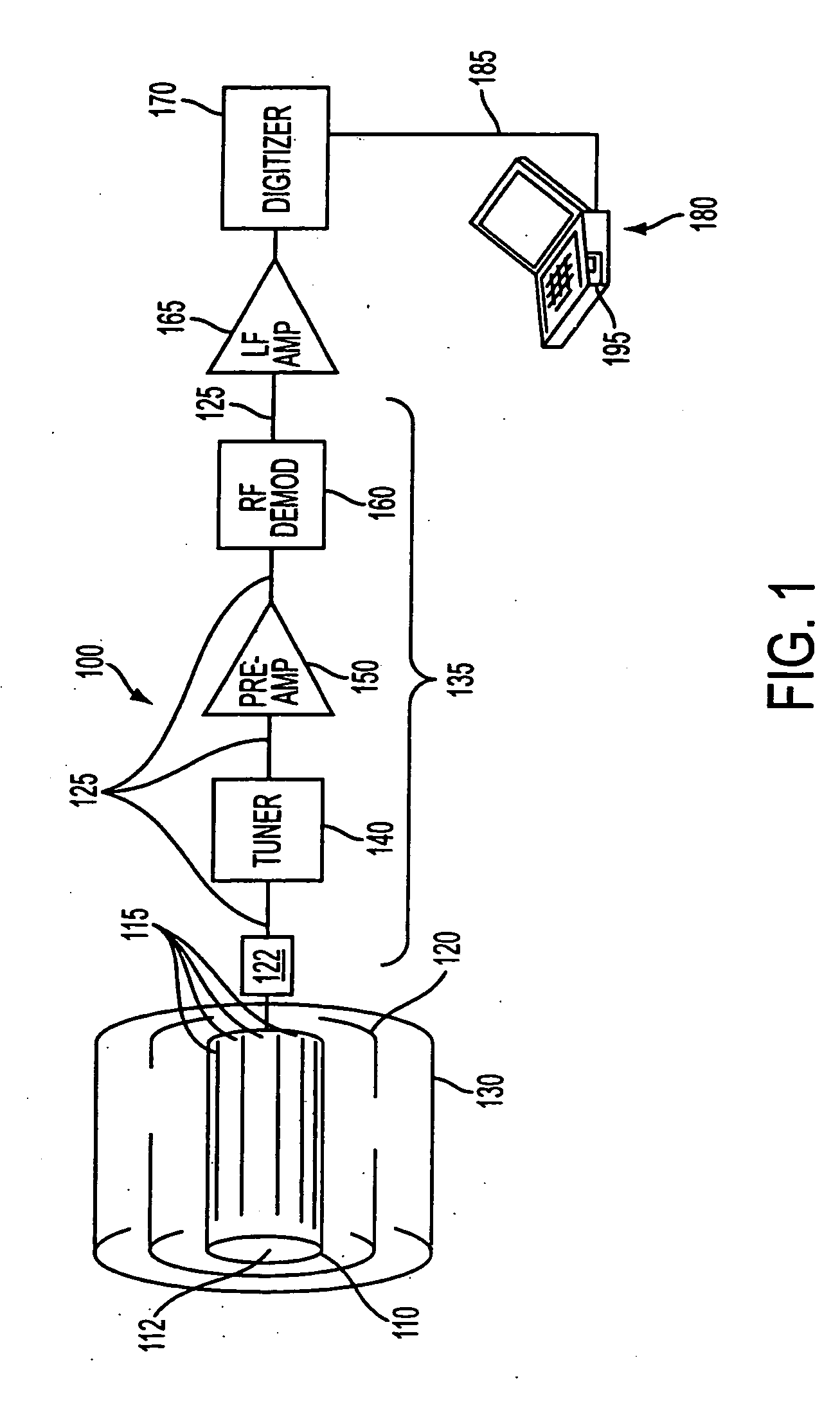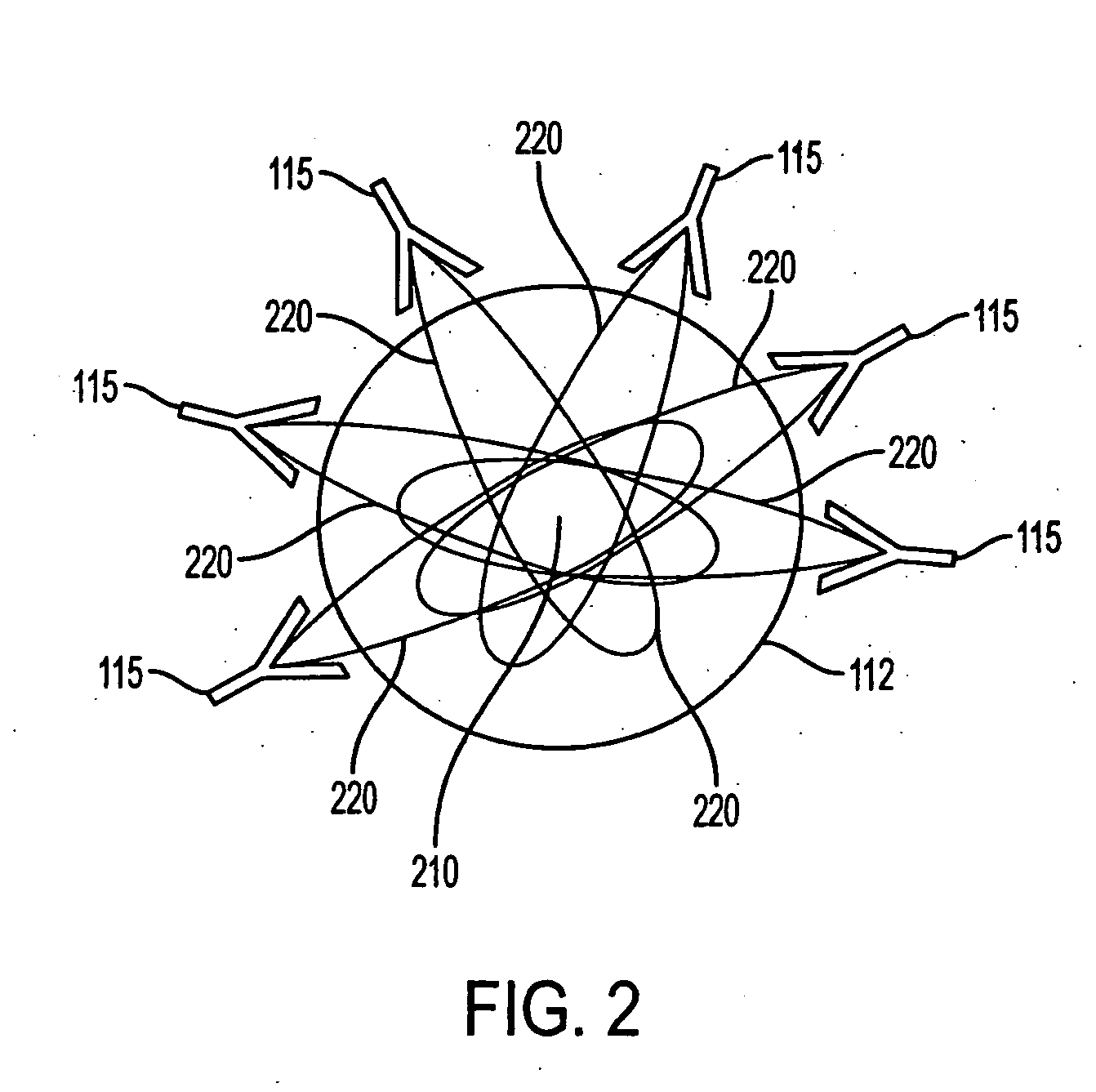Radiometric Approach to Temperature Monitoring Using a Magnetic Resonance Scanner
a magnetic resonance scanner and radiometric technology, applied in the direction of measuring using nmr, instruments, applications, etc., can solve the problems of difficult use of such temperature measurement techniques in medical applications, many rf noise sources in medical facilities, and difficult measurement in the radio frequency (rf) region of the electromagnetic spectrum, so as to achieve absolute non-invasive thermal imaging of target tissue volume, improve patient treatment effect, and improve accuracy
- Summary
- Abstract
- Description
- Claims
- Application Information
AI Technical Summary
Benefits of technology
Problems solved by technology
Method used
Image
Examples
Embodiment Construction
[0032] The present invention uses an MR scanner as a passive RF radiometer to detect thermal noise radiated from a target tissue. It is known that tissue (or any material, for that matter) emits electromagnetic radiation that varies with temperature. In the RF region of the electromagnetic spectrum, the statistical variance of the noise present in the RF radiated power is a function of temperature of the tissue. In an MR scanner, the RF noise that is generated by the tissue in the scanner may induce a current in the RF coil. The induced current in the RF coil may be detected by the electronics of the MR scanner, and processed to produce measurement of the absolute temperature of the tissue. The thermal noise generated by the tissue is a low amplitude signal, and subject to environmental noise and interference. However, by using the MR scanner room for electromagnetic shielding, one may create a sufficiently quiet RF environment around the tissue, enabling accurate measurement of the...
PUM
| Property | Measurement | Unit |
|---|---|---|
| frequencies | aaaaa | aaaaa |
| thermal | aaaaa | aaaaa |
| temperature | aaaaa | aaaaa |
Abstract
Description
Claims
Application Information
 Login to View More
Login to View More - R&D
- Intellectual Property
- Life Sciences
- Materials
- Tech Scout
- Unparalleled Data Quality
- Higher Quality Content
- 60% Fewer Hallucinations
Browse by: Latest US Patents, China's latest patents, Technical Efficacy Thesaurus, Application Domain, Technology Topic, Popular Technical Reports.
© 2025 PatSnap. All rights reserved.Legal|Privacy policy|Modern Slavery Act Transparency Statement|Sitemap|About US| Contact US: help@patsnap.com



